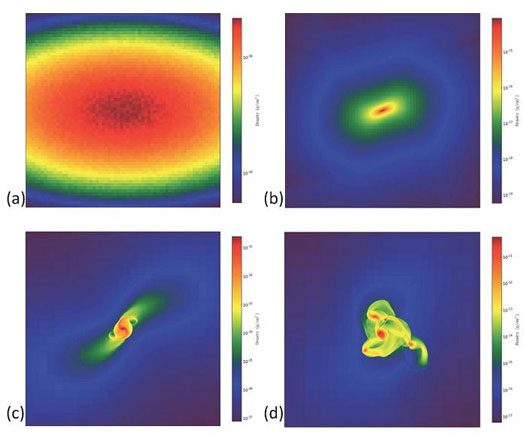 New modeling studies demonstrate that most of the stars we see were formed when unstable clusters of newly formed protostars broke up. These protostars are born out of rotating clouds of dust and gas, which act as nurseries for star formation. Rare clusters of multiple protostars remain stable and mature into multi-star systems. The unstable ones will eject stars until they achieve stability and end up as single or binary stars.
New modeling studies demonstrate that most of the stars we see were formed when unstable clusters of newly formed protostars broke up. These protostars are born out of rotating clouds of dust and gas, which act as nurseries for star formation. Rare clusters of multiple protostars remain stable and mature into multi-star systems. The unstable ones will eject stars until they achieve stability and end up as single or binary stars.
Sep 24th, 2014
Read more
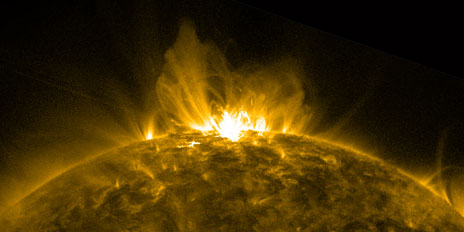 Strong solar flares can bring down communications and power grids on Earth. By demonstrating how these gigantic eruptions are caused, physicists are laying the foundations for future predictions.
Strong solar flares can bring down communications and power grids on Earth. By demonstrating how these gigantic eruptions are caused, physicists are laying the foundations for future predictions.
Sep 24th, 2014
Read more
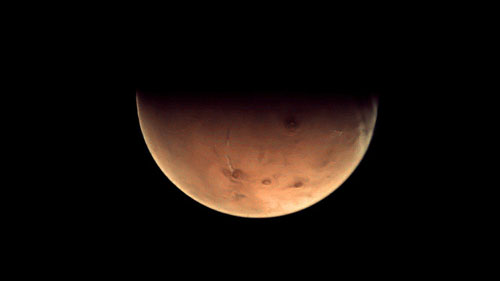 The red planet is about to welcome a new visitor: India's Mars Orbiter Mission (MOM) is hoping to start orbiting Mars on September 24. MOM is not the only new kid in town. There are currently five operational spacecraft orbiting Mars and two rovers on its surface. China, Japan, Russia, the US and joint European countries have all tried to send missions to Mars before India. What is it about our rocky neighbour that makes it such a focus of interest?
The red planet is about to welcome a new visitor: India's Mars Orbiter Mission (MOM) is hoping to start orbiting Mars on September 24. MOM is not the only new kid in town. There are currently five operational spacecraft orbiting Mars and two rovers on its surface. China, Japan, Russia, the US and joint European countries have all tried to send missions to Mars before India. What is it about our rocky neighbour that makes it such a focus of interest?
Sep 23rd, 2014
Read more
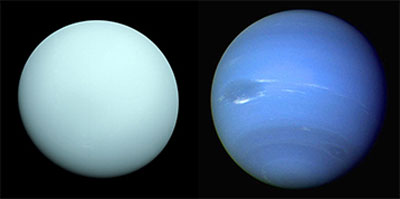 Researchers have proposed a solution to the problematic chemical composition of Uranus and Neptune, thus providing clues for understanding their formation. The researchers focused on the positioning of these two outermost planets of the Solar System, and propose a new model explaining how and where they formed.
Researchers have proposed a solution to the problematic chemical composition of Uranus and Neptune, thus providing clues for understanding their formation. The researchers focused on the positioning of these two outermost planets of the Solar System, and propose a new model explaining how and where they formed.
Sep 23rd, 2014
Read more
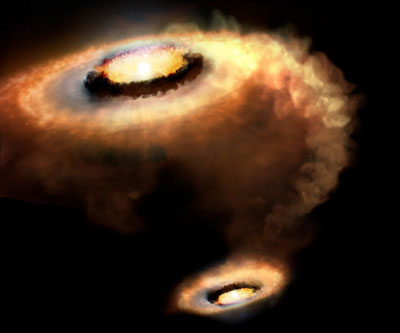 Astronomers using the Atacama Large Millimeter/submillimeter Array have observed what may be the first-ever signs of windy weather around a T Tauri star, an infant analog of our own Sun. This may help explain why some T Tauri stars have disks that glow weirdly in infrared light while others shine in a more expected fashion.
Astronomers using the Atacama Large Millimeter/submillimeter Array have observed what may be the first-ever signs of windy weather around a T Tauri star, an infant analog of our own Sun. This may help explain why some T Tauri stars have disks that glow weirdly in infrared light while others shine in a more expected fashion.
Sep 22nd, 2014
Read more
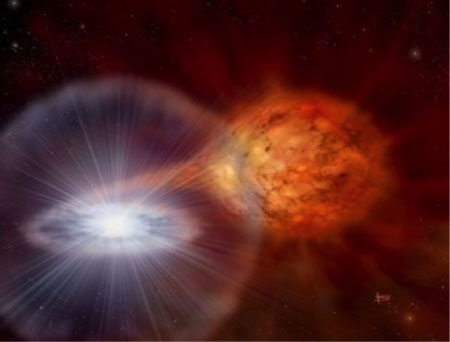 A new study of thermonuclear X-ray bursts on neutron stars reveals that shells can be expelled at speeds up to 30% of the speed of light.
A new study of thermonuclear X-ray bursts on neutron stars reveals that shells can be expelled at speeds up to 30% of the speed of light.
Sep 22nd, 2014
Read more
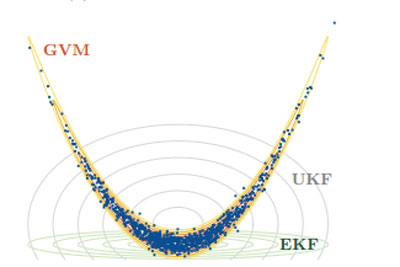 Space surveillance is inherently challenging when compared to other tracking environments due to various reasons, not least of which is the long time gap between surveillance updates. Scientists propose a more statistically rigorous treatment of uncertainty in the near-Earth space environment than currently available.
Space surveillance is inherently challenging when compared to other tracking environments due to various reasons, not least of which is the long time gap between surveillance updates. Scientists propose a more statistically rigorous treatment of uncertainty in the near-Earth space environment than currently available.
Sep 22nd, 2014
Read more
Scientists have shown how gravitational waves might be 'seen' by looking at the stars. The new model proposes that a star that oscillates at the same frequency as a gravitational wave will absorb energy from that wave and brighten, an overlooked prediction of Einstein's 1916 theory of general relativity. The study contradicts previous assumptions about the behavior of gravitational waves.
Sep 22nd, 2014
Read more
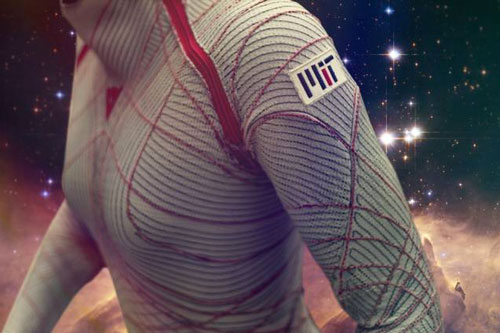 The BioSuit is a skintight spacesuit that offers improved mobility and reduced mass compared to modern gas-pressurized spacesuits.
The BioSuit is a skintight spacesuit that offers improved mobility and reduced mass compared to modern gas-pressurized spacesuits.
Sep 19th, 2014
Read more
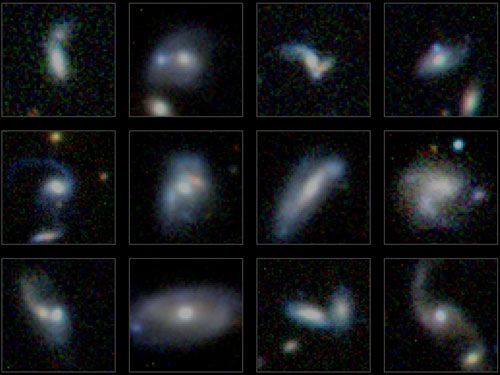 Research to be published this Friday shows that massive galaxies in the universe have stopped making their own stars and are instead 'snacking' on nearby galaxies. Astronomers looked at more than 22,000 galaxies and found that while smaller galaxies are very efficient at creating stars from gas, the most massive galaxies are much less efficient at star formation, producing hardly any new stars themselves, and instead grow by eating other galaxies.
Research to be published this Friday shows that massive galaxies in the universe have stopped making their own stars and are instead 'snacking' on nearby galaxies. Astronomers looked at more than 22,000 galaxies and found that while smaller galaxies are very efficient at creating stars from gas, the most massive galaxies are much less efficient at star formation, producing hardly any new stars themselves, and instead grow by eating other galaxies.
Sep 19th, 2014
Read more
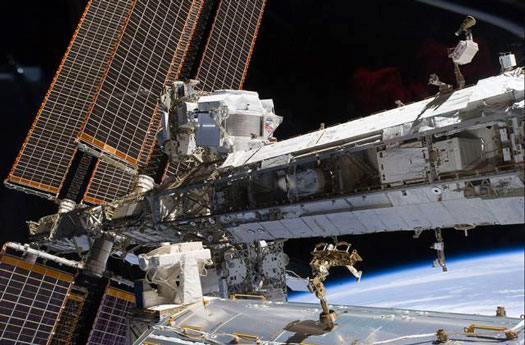 Alpha Magnetic Spectrometer detects positrons in cosmic ray flux that hint at dark matter's origin.
Alpha Magnetic Spectrometer detects positrons in cosmic ray flux that hint at dark matter's origin.
Sep 19th, 2014
Read more
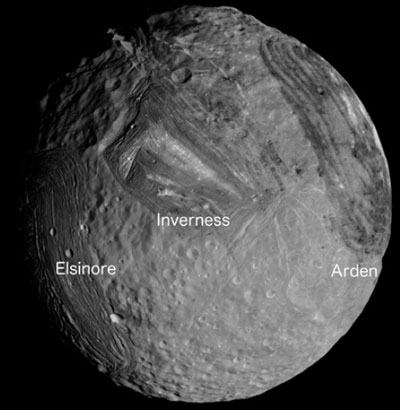 Miranda, a small, icy moon of Uranus, is one of the most visually striking and enigmatic bodies in the solar system. Despite its relatively small size, Miranda appears to have experienced an episode of intense resurfacing that resulted in the formation of at least three remarkable and unique surface features - polygonal-shaped regions called coronae.
Miranda, a small, icy moon of Uranus, is one of the most visually striking and enigmatic bodies in the solar system. Despite its relatively small size, Miranda appears to have experienced an episode of intense resurfacing that resulted in the formation of at least three remarkable and unique surface features - polygonal-shaped regions called coronae.
Sep 18th, 2014
Read more
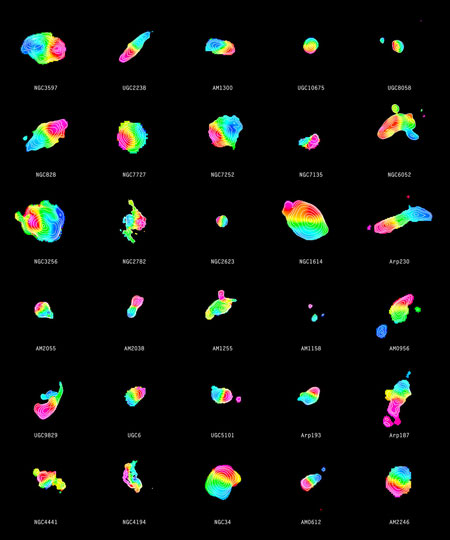 For decades scientists have believed that galaxy mergers usually result in the formation of elliptical galaxies. Now, for the the first time, researchers have found direct evidence that merging galaxies can instead form disc galaxies, and that this outcome is in fact quite common.
For decades scientists have believed that galaxy mergers usually result in the formation of elliptical galaxies. Now, for the the first time, researchers have found direct evidence that merging galaxies can instead form disc galaxies, and that this outcome is in fact quite common.
Sep 18th, 2014
Read more
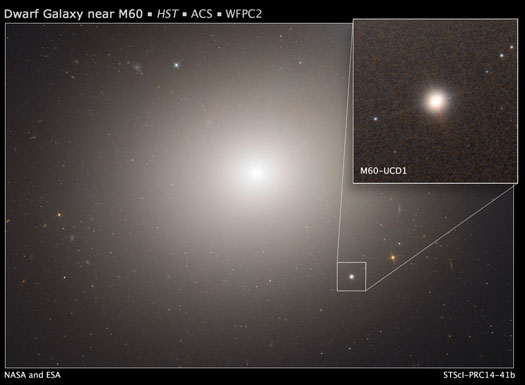 Astronomers have found an unlikely object in an improbable place: a monster black hole lurking inside one of the tiniest galaxies known.
Astronomers have found an unlikely object in an improbable place: a monster black hole lurking inside one of the tiniest galaxies known.
Sep 17th, 2014
Read more
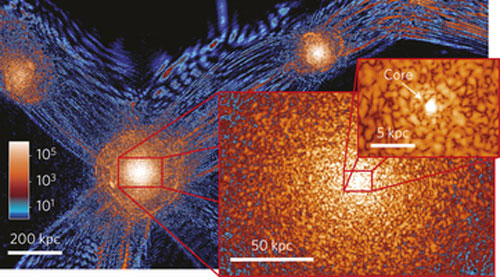 New research explores cold dark matter in depth and proposes new answers about the formation of galaxies and the structure of the universe. These predictions are being contrasted with fresh data provided by the Hubble space telescope.
New research explores cold dark matter in depth and proposes new answers about the formation of galaxies and the structure of the universe. These predictions are being contrasted with fresh data provided by the Hubble space telescope.
Sep 17th, 2014
Read more
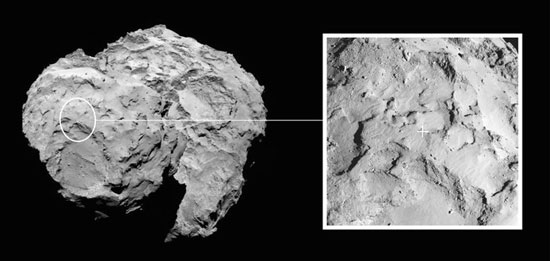 Rosetta's lander Philae will target Site J, an intriguing region on Comet 67P/Churyumov-Gerasimenko that offers unique scientific potential, with hints of activity nearby, and minimum risk to the lander compared to the other candidate sites.
Rosetta's lander Philae will target Site J, an intriguing region on Comet 67P/Churyumov-Gerasimenko that offers unique scientific potential, with hints of activity nearby, and minimum risk to the lander compared to the other candidate sites.
Sep 15th, 2014
Read more
A tiny fragment of Martian meteorite 1.3 billion years old is helping to make the case for the possibility of life on Mars, say scientists.
Sep 15th, 2014
Read more
Underscoring the vast differences between Earth and its neighbor Venus, new research shows a glimpse of giant holes in the electrically charged layer of the Venusian atmosphere, called the ionosphere. The observations point to a more complicated magnetic environment than previously thought - which in turn helps us better understand this neighboring, rocky planet.
Sep 12th, 2014
Read more
 New modeling studies demonstrate that most of the stars we see were formed when unstable clusters of newly formed protostars broke up. These protostars are born out of rotating clouds of dust and gas, which act as nurseries for star formation. Rare clusters of multiple protostars remain stable and mature into multi-star systems. The unstable ones will eject stars until they achieve stability and end up as single or binary stars.
New modeling studies demonstrate that most of the stars we see were formed when unstable clusters of newly formed protostars broke up. These protostars are born out of rotating clouds of dust and gas, which act as nurseries for star formation. Rare clusters of multiple protostars remain stable and mature into multi-star systems. The unstable ones will eject stars until they achieve stability and end up as single or binary stars.
 Subscribe to our Space Exploration News feed
Subscribe to our Space Exploration News feed












